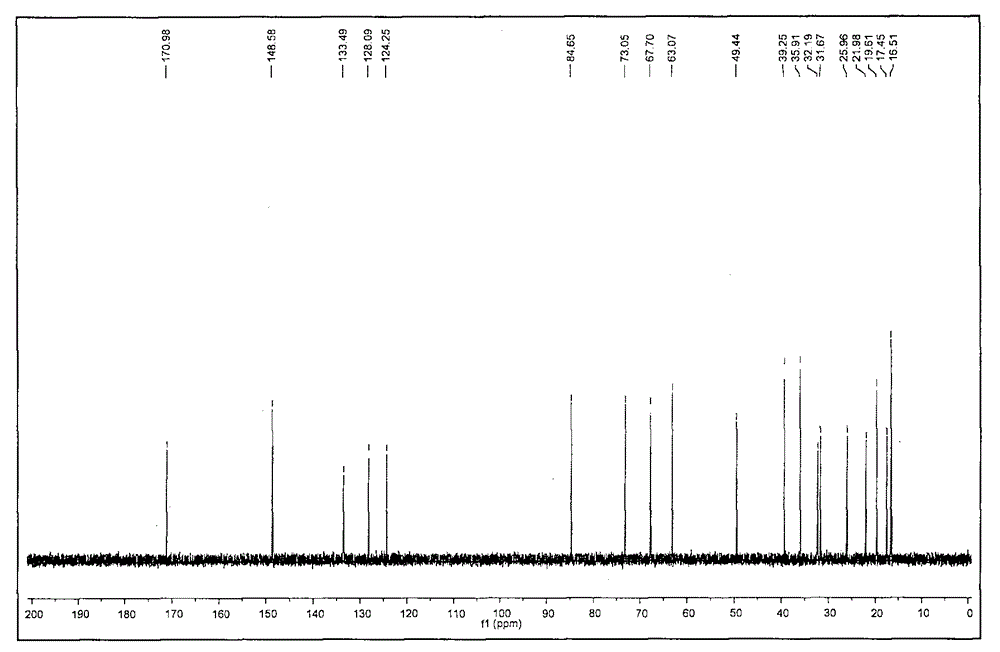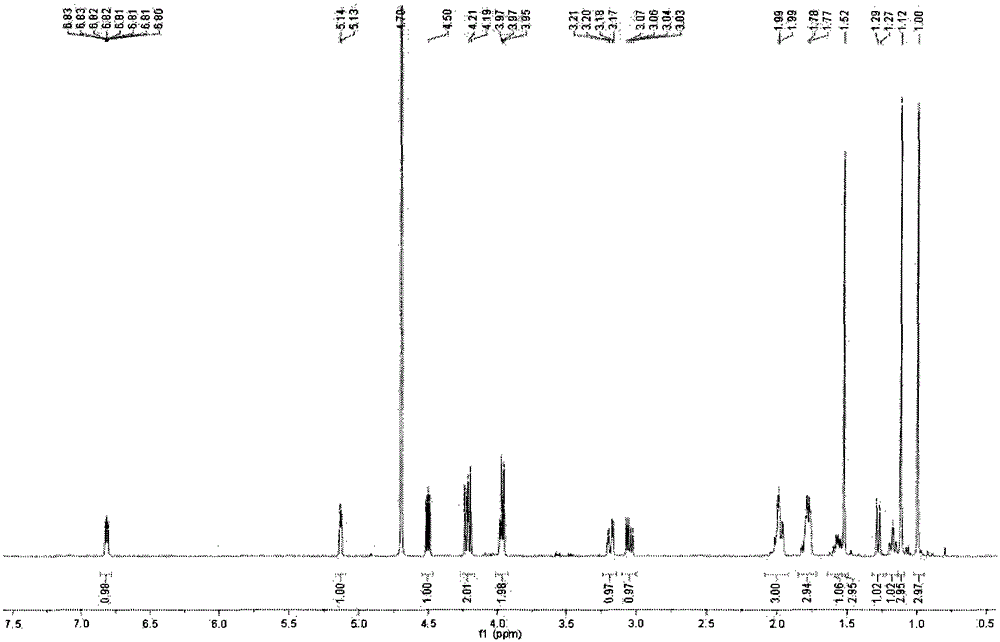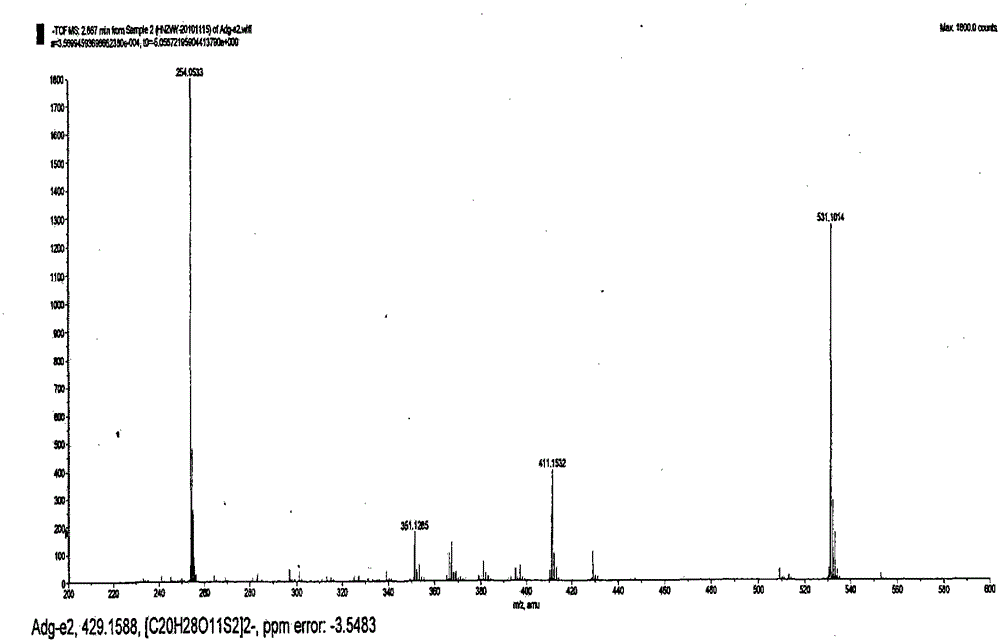17-Hydro-9-dehydroandrographolide-3,19-disulfate, preparation method and pharmaceutical use thereof
A technology of andrographolide and disulfate, which is applied to 17-hydrogen-9-dehydroandrographolide-3, can solve the problems of poor solubility and stability, and achieve pharmacological activity, high stability, Little hemolysis effect
- Summary
- Abstract
- Description
- Claims
- Application Information
AI Technical Summary
Problems solved by technology
Method used
Image
Examples
Embodiment 1
[0068] Get andrographolide, add 5.3 times the amount of acetic anhydride (62%) and glacial acetic acid (38%) to dissolve, and under stirring, slowly add 4.3 times the amount in equal proportions at a rate of 2.2ml per minute for 1g of andrographolide Sulfuric acid glacial acetic acid, mix well, adjust the temperature of the reaction kettle at 15°C, place it for 90 minutes for sulfonation, add an equal amount of purified water, then pour it into saturated sodium chloride solution, and then go through macroporous adsorption resin and ODS column chromatography Separation, gradient elution with water: ethanol, the proportion of water is 80-20%, the proportion of ethanol is 20-80%, the eluate is collected in sections, the same components are combined, and crystallized to obtain 17-hydrogen-9-de Sodium hydroandrographolide-3,19-disulfate, its sodium salt Molecular formula: C 20 h 28 Na 2 o 11 S 2 , Molecular weight: 554.
[0069] Reaction example:
[0070]
[0071] 17-Hydro...
Embodiment 2
[0076] Get andrographolide, add 4.2 times the amount of acetic anhydride to dissolve, and under stirring, add 3.7 times the amount of sulfuric acid (52%) and glacial acetic acid (48%) by atomization at a rate of 2.0 ml per minute for 1 g of andrographolide , Mix well, adjust the temperature of the reactor at 20°C, and place it for 80 minutes for sulfonation. The reactant was poured into a saturated sodium chloride solution, the precipitate was washed with a saturated sodium chloride solution and water respectively, the solid was refluxed with chloroform, the insoluble was dissolved by adding absolute ethanol, the alcohol insoluble was removed, the ethanol was recovered, and crystallized to obtain Sodium 17-hydro-9-dehydroandrographolide-3,19-disulfate.
Embodiment 3
[0078] Get andrographolide, add 5.4 times the amount of acetic anhydride (60%) and glacial acetic acid (40%) to dissolve, and under stirring, add 4.3 times the amount of sulfuric acid by atomization at a rate of 1.8ml per minute for 1g andrographolide (53%) and glacial acetic acid (47%), mix evenly, adjust the temperature of the reactor at 17°C, and place it for 100 minutes for sulfonation. Add an equal amount of purified water, stir well, adjust the pH to about 7.0 with 46% NaOH, add 95% ethanol to make the alcohol content reach more than 85%, recover ethanol under reduced pressure, and separate the aqueous solution through macroporous adsorption resin and ODS column chromatography. Gradient elution with water: ethanol, the proportion of water is 80-20%, the proportion of ethanol is 20-80%, the eluate is collected in sections, the same components are combined, and crystallized to obtain 17-hydrogen-9-dehydroandrographis paniculata Sodium lactone-3,19-disulfate.
PUM
 Login to View More
Login to View More Abstract
Description
Claims
Application Information
 Login to View More
Login to View More - R&D
- Intellectual Property
- Life Sciences
- Materials
- Tech Scout
- Unparalleled Data Quality
- Higher Quality Content
- 60% Fewer Hallucinations
Browse by: Latest US Patents, China's latest patents, Technical Efficacy Thesaurus, Application Domain, Technology Topic, Popular Technical Reports.
© 2025 PatSnap. All rights reserved.Legal|Privacy policy|Modern Slavery Act Transparency Statement|Sitemap|About US| Contact US: help@patsnap.com



